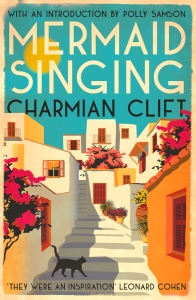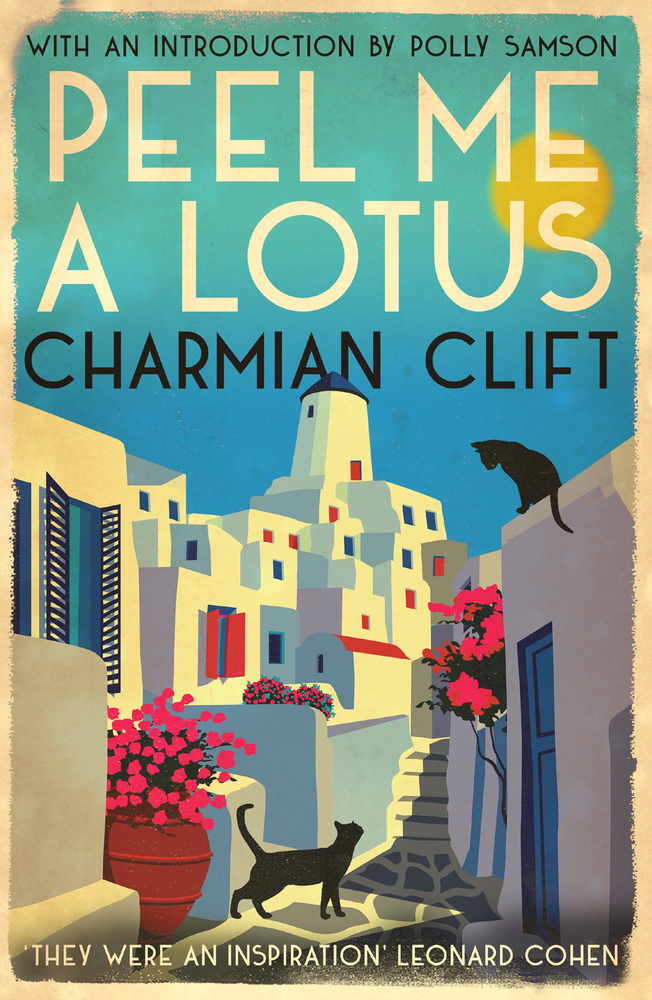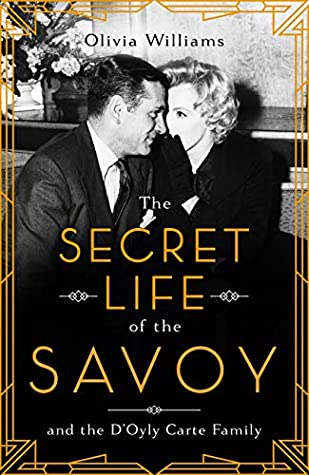While I haven’t been keeping up with the prompts for #NonFictionNovember, I still do mean to sneak in at least one non-fiction read in what’s left of the month, but in the meantime, here’s a roundup of the non-fiction titles I have read so far in 2021. To my own surprise, I read 12 non-fiction books this year, with an additional 2 which could fall into the non-fic category. Of the books I read, four were biographies, five history titles, one food history, and two to do with nature and animals. The additional two were memoirs.
This is far far better than the only two I had managed in 2020. All of the books I read however were via NetGalley, and so my own quite formidable pile of physical and e-books are still as they were last year (and I must really begin to read them before I add any more).



Among the bios I read, was that of one of my favourite authors, Barbara Pym, whose books I was introduced to by an online book group about a decade ago. The Adventures of Miss Barbara Pym by Paula Byrne takes a look at Pym’s life (mostly beginning from her days at Oxford after a brief look at her childhood) which was full of ups and downs, both her romantic life and her literary career. The people she met and experiences she had provided the inspiration for many of her books and characters, and made her story both interesting and poignant just as her books were. Next, Etta Lemon: The Woman Who Saved Birds by Tessa Boase was a bio of two formidable women, Etta Lemon who played a important role in the founding of the Royal Society for the Protection of Birds and Emmeline Pankhurst who was a leading voice amongst the suffragettes. This excellently researched book tells us how both women were powerful and strong voices in their own ways and yet were at opposite sides on certain issues (women’s suffrage and fashion)and how their stories intersected in interesting ways. The Improbable Adventures of Emily Soldene by Helen Batten introduces us to another extraordinary woman from Victorian times. Emily Soldene, an actress, singer, director and writer lived life on her own terms at a time it was hard for women to really do so, did things that were considered taboo, and despite life’s ups and downs never lost her zest for life.
The final bio on my list was not one of a person but rather of a hotel, The Savoy, and the family that ran it. The Secret Life of the Savoy by Olivia Williams tells the absorbing story of the D’Oyly Carte family which started by establishing the Savoy theatre and making the Gilbert and Sullivan partnership a lasting one; they then went on to establish the Savoy Hotel, a place where providing the customer the best was always given precedence over profit. Unconventional and eccentric, the family and the institutions they created gave us much and left a lasting legacy.
Among the titles I broadly classify as history is London and the 17th Century by Margarette Lincoln which gives us a look into this bustling and rich city, focusing not only on monarchs and the nobility but people from all walks of life, and the developments in this period that defined the city from the establishment of the first coffee houses and newspapers to the shipping industry, political turmoil to theatre and pageantry–the story of the city and the various people who made it what it was. Meet the Georgians by Robert Peal takes us into England during the Georgian period, a time characterised by relative political stability, colourful fashions, fun loving people, and relaxed morals. But Peal tells his story, not by talking broadly of the period he focuses on but by introducing us to twelve prominent Georgians, men and women who represented different facets of the age.



William of Orange and the Fight for the Crown by Brian Best focuses on William of Orange and his wife Mary, who took the English throne in the ‘bloodless’, Glorious Revolution, but went on to face opposition, conspiracies and fight several battles to hold on to the crown during their short reign. This was an interesting, detailed and well written account of the various wars fought and battles they faced.
Condemned by Graham Seal takes us into a different realm–the stories of the men, women and children who were ‘transported’ from the 17th to the 19th centuries to different parts of the world by the British (mostly to their colonies) and which included a range of people like political dissidents and indentured servants rather than just convicts. Many, in fact, most suffered but there were also those who survived and even thrived in their new environments. This book was an interesting read which brought to light the realities of this cruel practice but also introduced me to a lot of colourful characters.
The Story of the Country House by Clive Aslet, on the the hand, traces the evolution of the English country house from mediaeval times to the present–the various forms it took, the ways in which it was used, the architects who designed them and the people who lived in them. Focusing on architectural detail and matters of style, this book is well researched and rich in information.
Telling the story of one of the most iconic Italian dishes, Spaghetti and Tomato Sauce from its component parts to the ingredients that come together to make it, A Short History of Spaghetti and Tomato Sauce by Massimo Montanari is short, interesting and very readable. The book also delves into issues of origin, roots and identity.


Focusing on nature and animals were Light Rains Sometimes Fall by Lev Parikian in which the author looks at English seasons from the lens of the 72 Japanese microseasons taking note of subtle changes like the arrival of seasonal birds, the blooming of different flowers, and also smaller creatures like insects, besides mosses and fungi. A lovely way of reminding ourselves to stop and smell the roses. How to Examine a Wolverine by Philipp Schott was a fun and informative account of Dr Philipp Schott’s experiences in his veterinary training and practice–we meet his interesting patients, read of fun but also heartbreaking incidents, and pick up some information on how to care better for our furry pals (slithery ones too).


Finally, are two reads that are memoirs but I am not sure they entirely fit within the non-fic category–perhaps one can see them as both. Mermaid Singing and Peel Me a Lotus are two volumes of memoirs of Australian author Charmian Clift of the time she and her family spent living in Greece, initially on the small island of Kalymnos and later on Hydra. While the first volume is a lighter look into island life, culture, and people, the second, amidst the sizeable expat community reflects not only her experiences but also the frustrations and responsibilities that weigh on her making it much darker in tone.
So that was my nonfic reading so far is 2021–I have thoroughly enjoyed reading these and they’ve also reminded me that I should pick up nonfic titles oftener than I have been doing.
Have you read any of these or are any on your TBR? What non-fiction titles did you enjoy the most this year? Looking forward to your thoughts and recommendations!




I remember quite a few of your reviews of these — surprising how many get read in a year, isn’t it — and reminds me I must get on with a nonfiction novella which I’ve currently paused. I think I’ve already read about a dozen or so nonfiction titles this year without really intending to!
LikeLiked by 1 person
That’s the best way; I actually enjoy reading nonfic but somehow always end up picking up fiction when faced with a choice between the two
LikeLiked by 1 person
I have Miss Barbara Pym TBR courtesy of a loan from Heaven-Ali! A good selection here, and I love that there are so many different ways to join in with NonFiction November!
LikeLike
Hope you enjoy it too🙂 I did very much especially seeing how much her stories and characters were inspired by her own experiences
LikeLiked by 1 person
So many great non fiction books. I will do a better job of reading more non fiction books in 2022. I hope!
LikeLiked by 1 person
Thank you🙂 I always plan to read more nonfiction as well but never do get down to it, and i don’t really know why since i do enjoy the. This year I think the difference was since these were review copies, I picked them up sooner than i would have otherwise
LikeLike
This is the first year I have kept up with Nonfiction November, and I have quite enjoyed it.
I haven’t read any of the books you mention but I really want to read the Charmian Clift ones. My reading group did one when I was living overseas. I am also interested in Paula Byrne on Barbara Pym, as both writers interest me. Paula Byrne is of course a bit of an Austen scholar so her interest in Pym is not surprising.
Finally, the women who saved birds – yep, I’d like to read that too, but it’s probably far less likely.
LikeLiked by 1 person
The Byrne was excellent even though chunky. I was a touch uncomfortable that she went so much into her personal life but then it was there that many of her stories and characters came from.
The bird one was also pretty interesting but rather than being only birds, it was both the suffragettes and the bird women.
The Clifts were pretty nice as well especially the look into life on Greek islands back then; the second was heavier since it reflected her frustrations with everything and also darker thoughts, but otherwise a good read.
LikeLike
Thanks for expanding your reflections on these, Mallika. Really useful. Given Charmian committed suicide I guess I’m not surprised about the second one.
LikeLiked by 1 person
Yes, I wasn’t familiar with her till i started these books but the context helped me understand the second book.
LikeLiked by 1 person